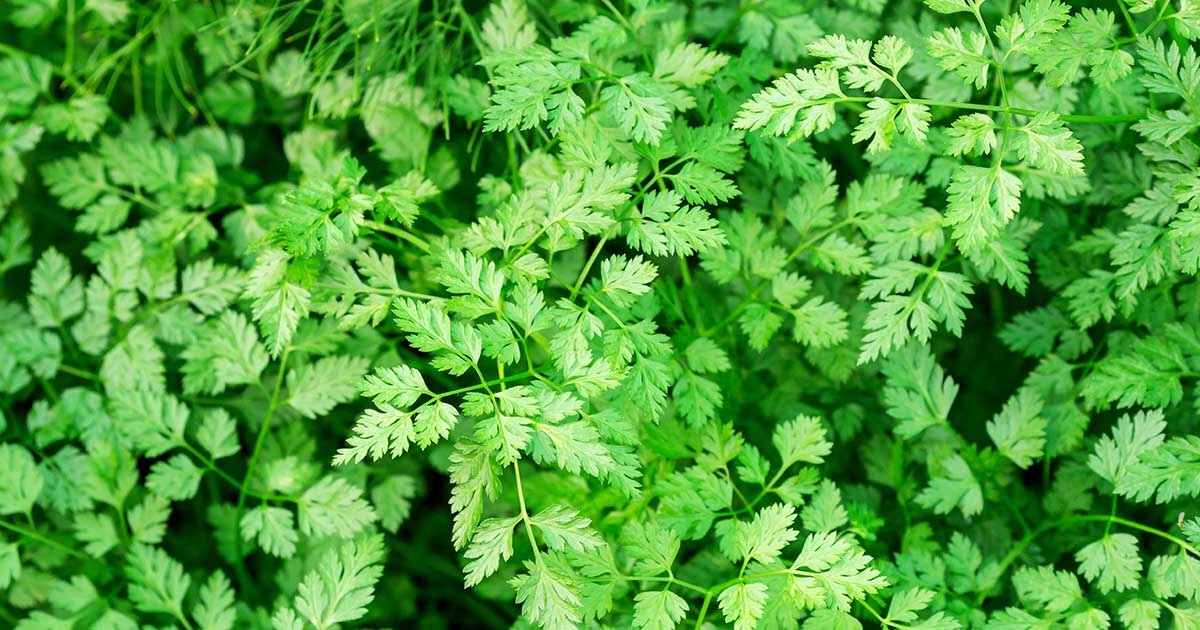
Chervil, often called "gourmet's parsley," is a delicate herb that adds a subtle, anise-like flavor to dishes. But what makes chervil so special? This lesser-known herb, part of the carrot family, has been cherished in European kitchens for centuries. Its feathery leaves and mild taste make it a favorite in French cuisine, especially in the classic blend known as "fines herbes." Beyond its culinary uses, chervil boasts a rich history and surprising health benefits. From aiding digestion to its role in traditional medicine, there's more to chervil than meets the eye. Ready to learn more? Let's dive into 32 fascinating facts about this versatile herb!
What is Chervil?
Chervil, often called French parsley, is a delicate herb with a mild flavor. It's a staple in French cuisine, especially in the famous fines herbes blend. Here are some fascinating facts about this lesser-known herb.
- Chervil belongs to the Apiaceae family, the same family as parsley, carrots, and celery.
- The herb has a subtle anise-like flavor, making it a unique addition to many dishes.
- Chervil is often used in French cuisine, particularly in omelets, salads, and soups.
- The plant is native to the Caucasus region but has been cultivated in Europe for centuries.
- Chervil is one of the four herbs in the traditional French fines herbes blend, along with parsley, tarragon, and chives.
- The herb is best used fresh, as its delicate flavor diminishes quickly when dried.
- Chervil has a short growing season, typically thriving in the cooler months of spring and fall.
- The plant grows to about 12-24 inches in height and has delicate, fern-like leaves.
Nutritional Benefits of Chervil
Chervil isn't just a flavorful herb; it also offers several nutritional benefits. Let's dive into some of the health perks this herb provides.
- Chervil is low in calories, making it a great addition to any diet.
- The herb is rich in vitamins, particularly vitamin C and vitamin A.
- Chervil contains essential minerals like calcium, iron, and magnesium.
- The herb has antioxidant properties, which help protect the body from free radicals.
- Chervil is known for its diuretic properties, aiding in the removal of excess fluids from the body.
- The herb has been used in traditional medicine to treat digestive issues and high blood pressure.
- Chervil can help improve skin health due to its high vitamin content.
- The herb's mild flavor makes it a great way to add nutrients to dishes without overpowering other flavors.
Growing Chervil at Home
Growing chervil at home can be a rewarding experience. It's relatively easy to cultivate, even for novice gardeners. Here are some tips and facts about growing this herb.
- Chervil prefers cool, shaded areas and can tolerate light frost.
- The herb grows best in well-drained soil with a pH between 6.0 and 7.0.
- Chervil seeds should be sown directly into the soil, as they do not transplant well.
- The seeds should be planted about 1/4 inch deep and spaced 6-12 inches apart.
- Chervil requires consistent moisture, so be sure to water it regularly.
- The herb can be harvested about 6-8 weeks after planting, once the leaves are fully developed.
- To encourage continuous growth, harvest chervil leaves regularly.
- Chervil can be grown indoors in pots, making it a versatile herb for any home gardener.
Culinary Uses of Chervil
Chervil's mild flavor and delicate texture make it a versatile ingredient in the kitchen. Here are some ways to incorporate this herb into your cooking.
- Chervil is a key ingredient in the classic French fines herbes blend, used to season a variety of dishes.
- The herb pairs well with eggs, making it a popular addition to omelets and quiches.
- Chervil can be used to garnish soups, adding a fresh, subtle flavor.
- The herb is often added to salads for a hint of anise-like flavor.
- Chervil can be used to flavor sauces, particularly those made with butter or cream.
- The herb is a great addition to fish dishes, complementing the delicate flavors of seafood.
- Chervil can be used to make herb butter, which can be spread on bread or used to season vegetables.
- The herb's mild flavor makes it a great addition to compound butters, vinaigrettes, and marinades.
Chervil: A Hidden Gem in Your Kitchen
Chervil might not be the most famous herb, but it sure packs a punch. This delicate plant, often overshadowed by parsley and cilantro, brings a unique flavor to dishes. Its subtle blend of anise and parsley can elevate soups, salads, and sauces. Plus, chervil's health benefits, like aiding digestion and reducing inflammation, make it a great addition to your diet.
Growing chervil at home is easy. It thrives in cool, shaded spots and can be harvested quickly. Whether you're a seasoned chef or a home cook, adding chervil to your herb garden can open up new culinary possibilities.
So next time you're at the market or planning your garden, give chervil a chance. This underrated herb might just become your new kitchen favorite. Happy cooking!
Was this page helpful?
Our commitment to delivering trustworthy and engaging content is at the heart of what we do. Each fact on our site is contributed by real users like you, bringing a wealth of diverse insights and information. To ensure the highest standards of accuracy and reliability, our dedicated editors meticulously review each submission. This process guarantees that the facts we share are not only fascinating but also credible. Trust in our commitment to quality and authenticity as you explore and learn with us.
